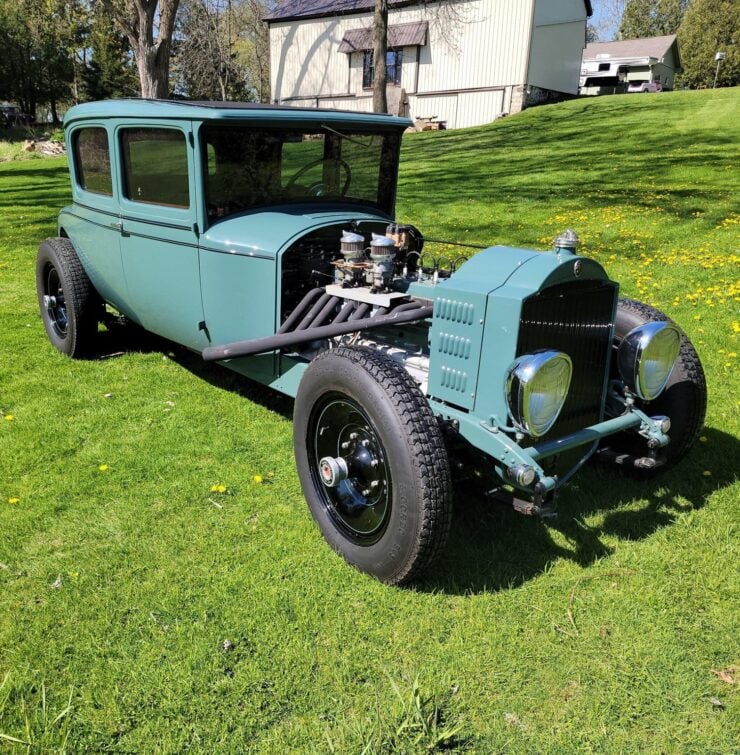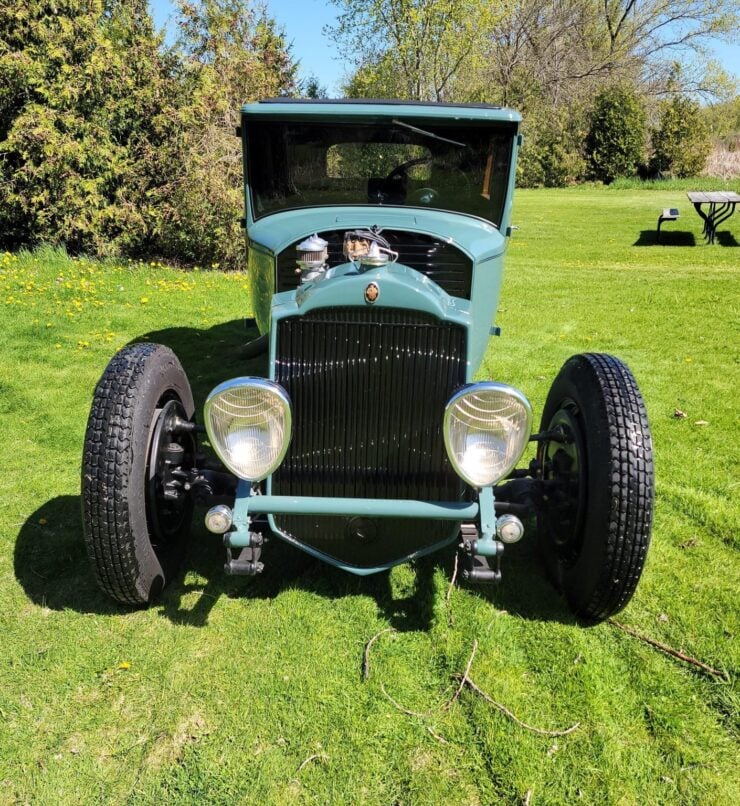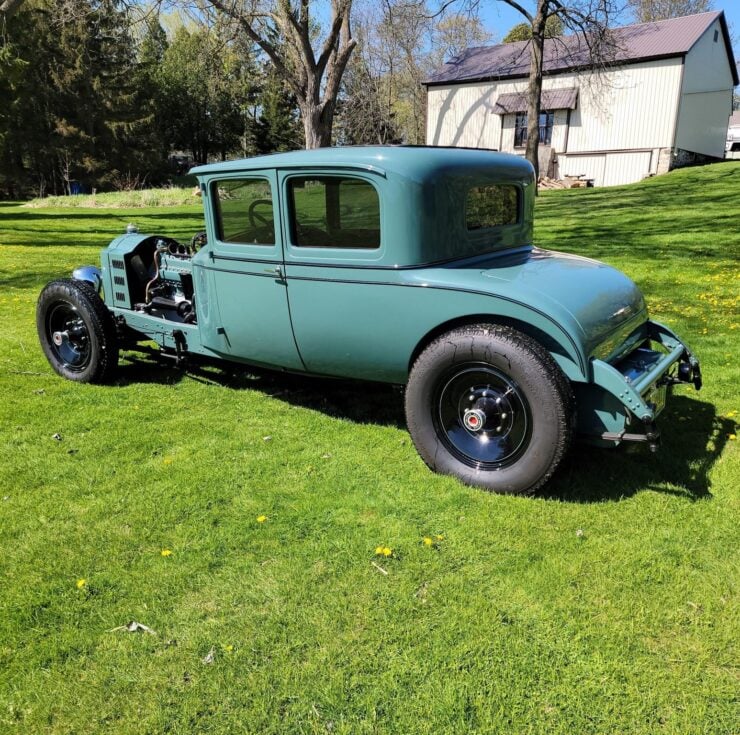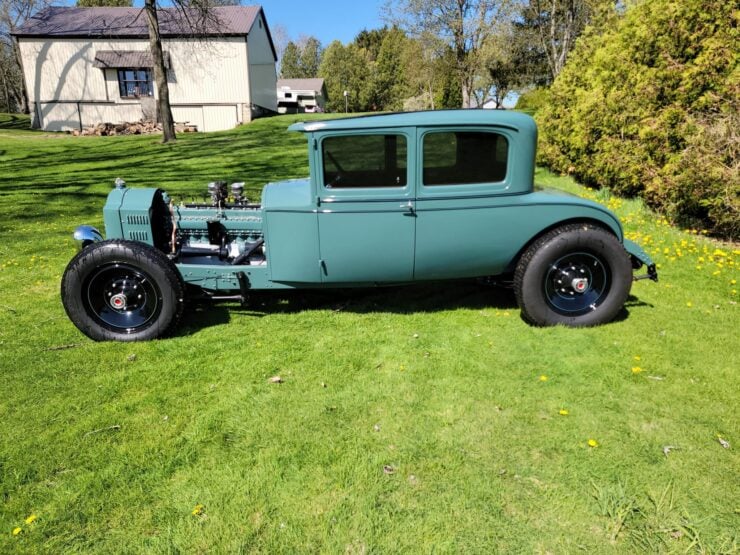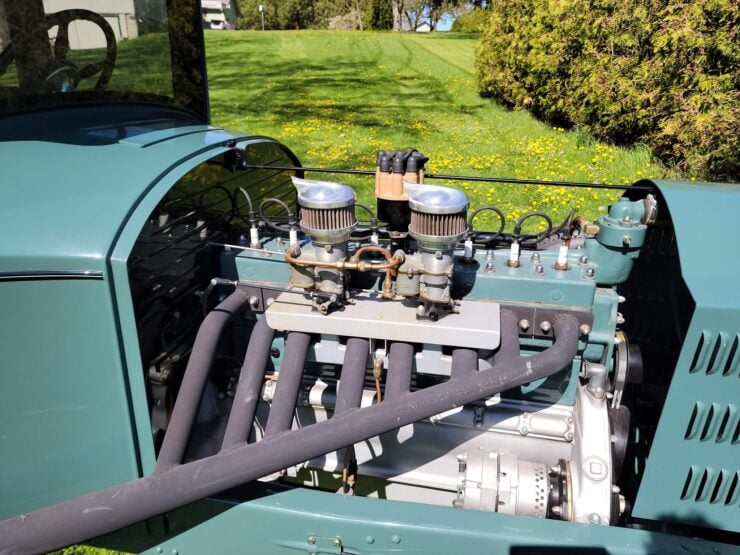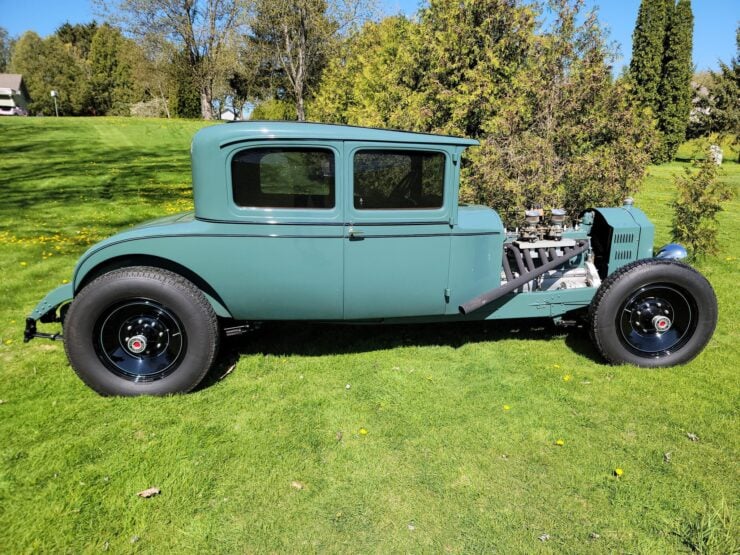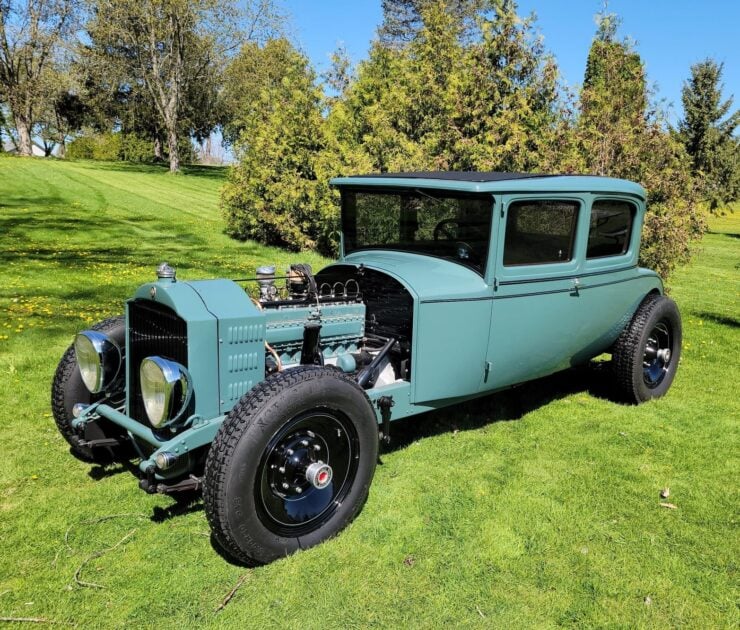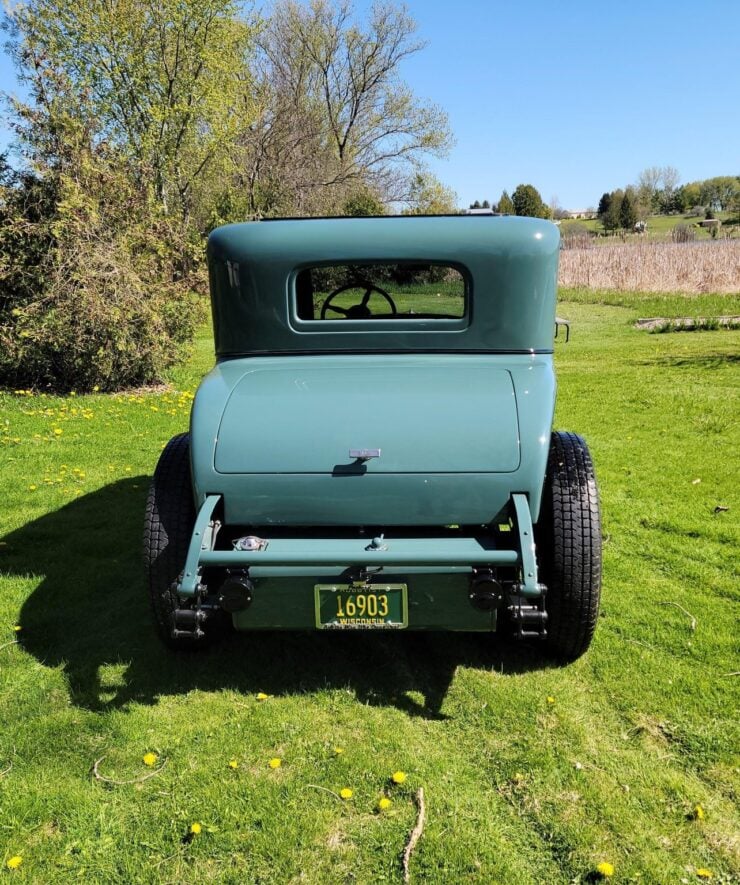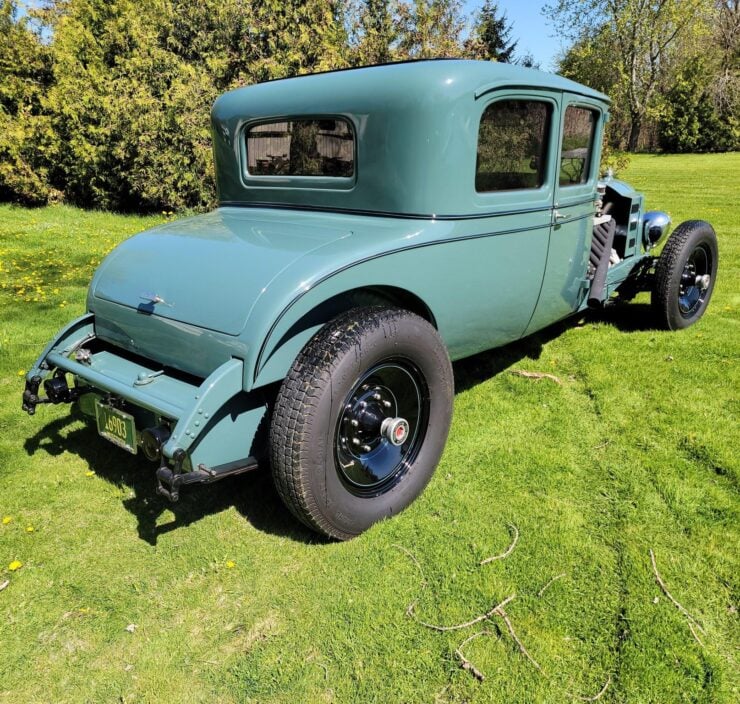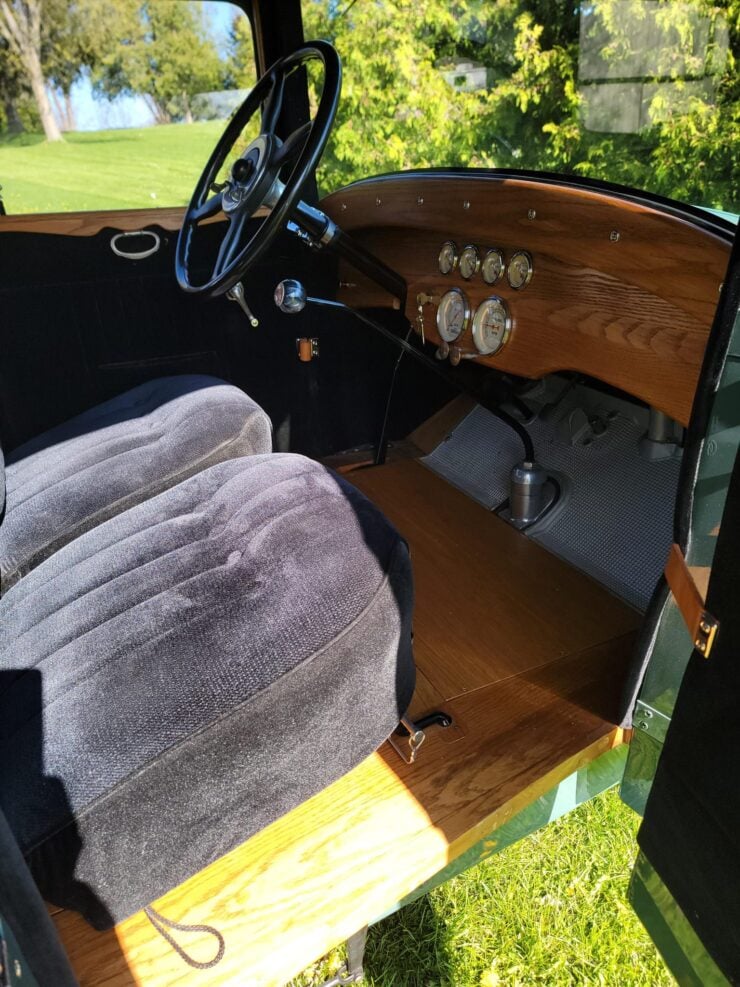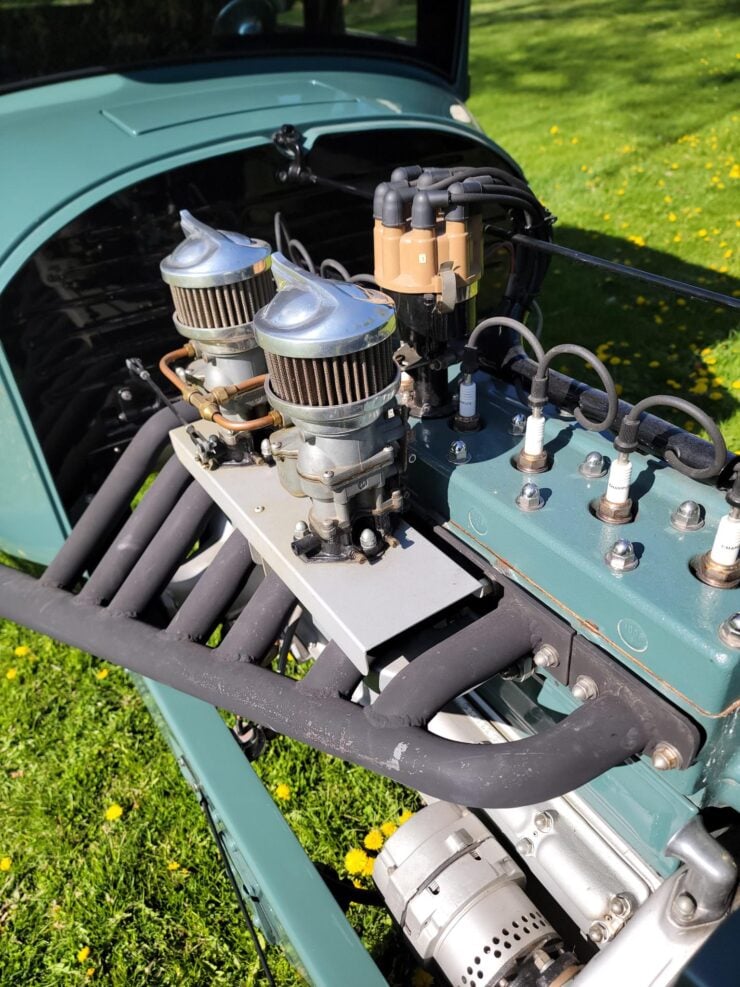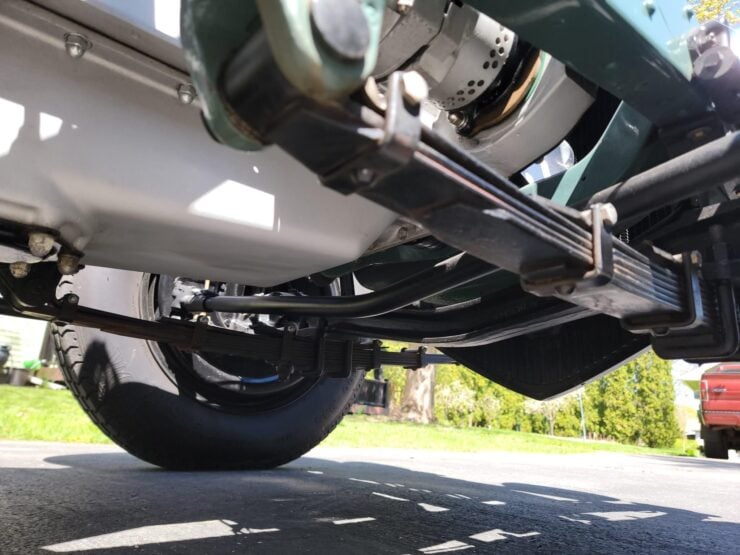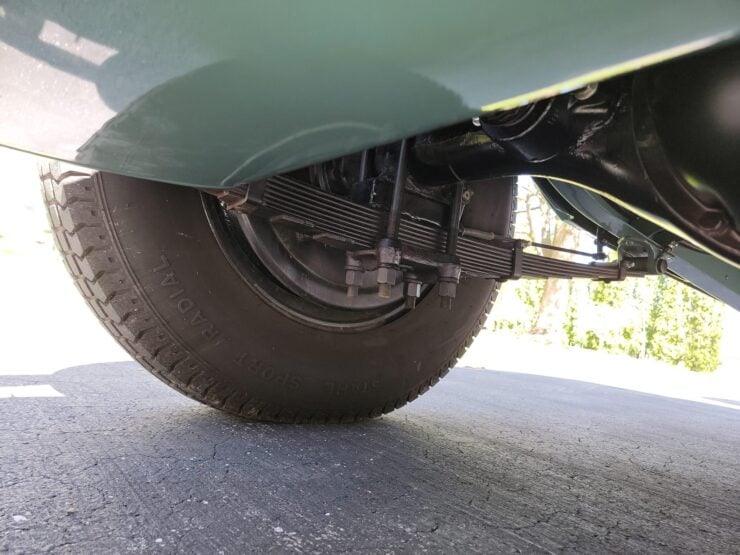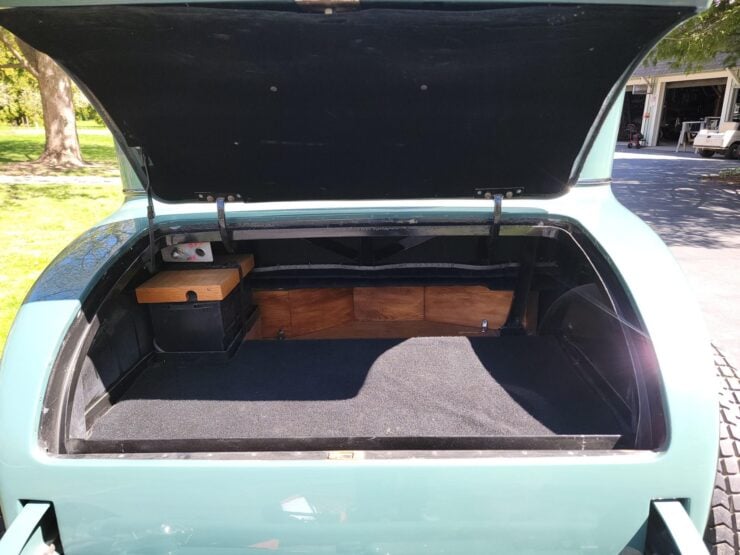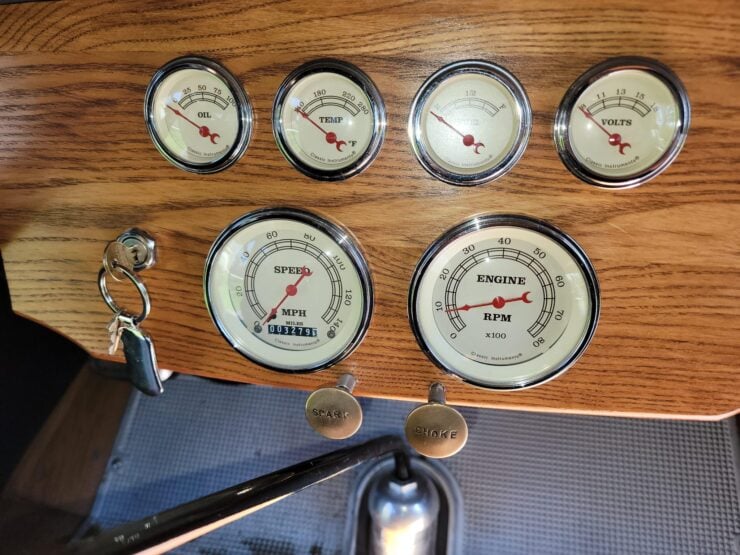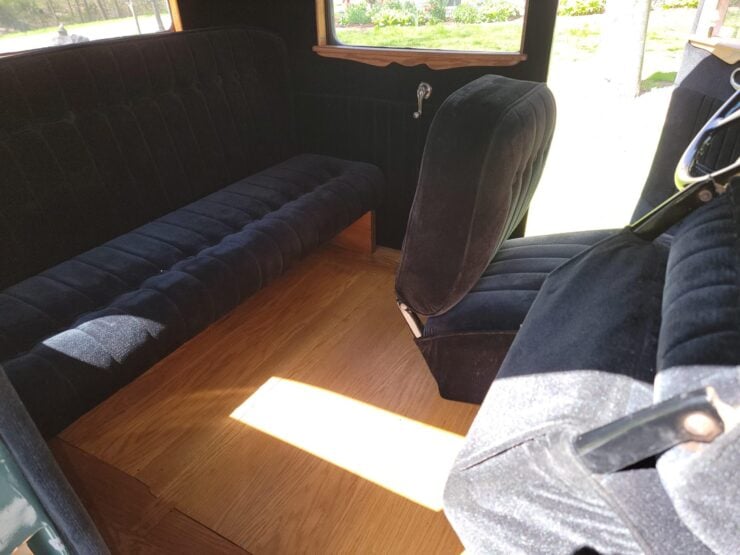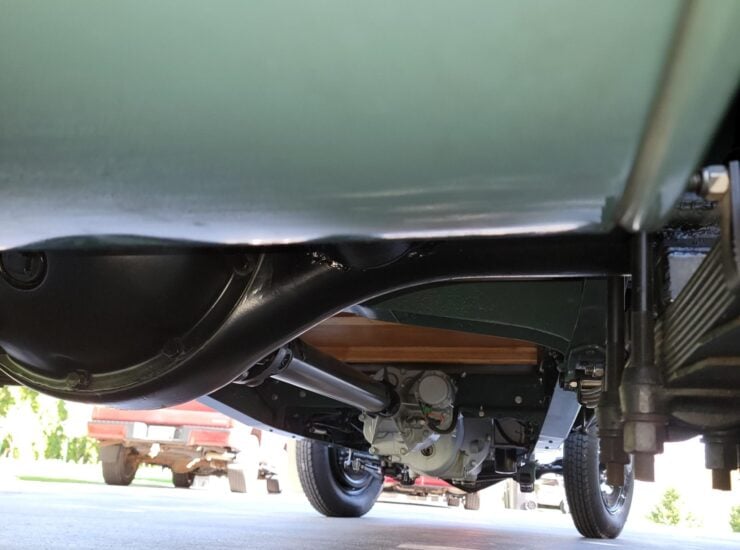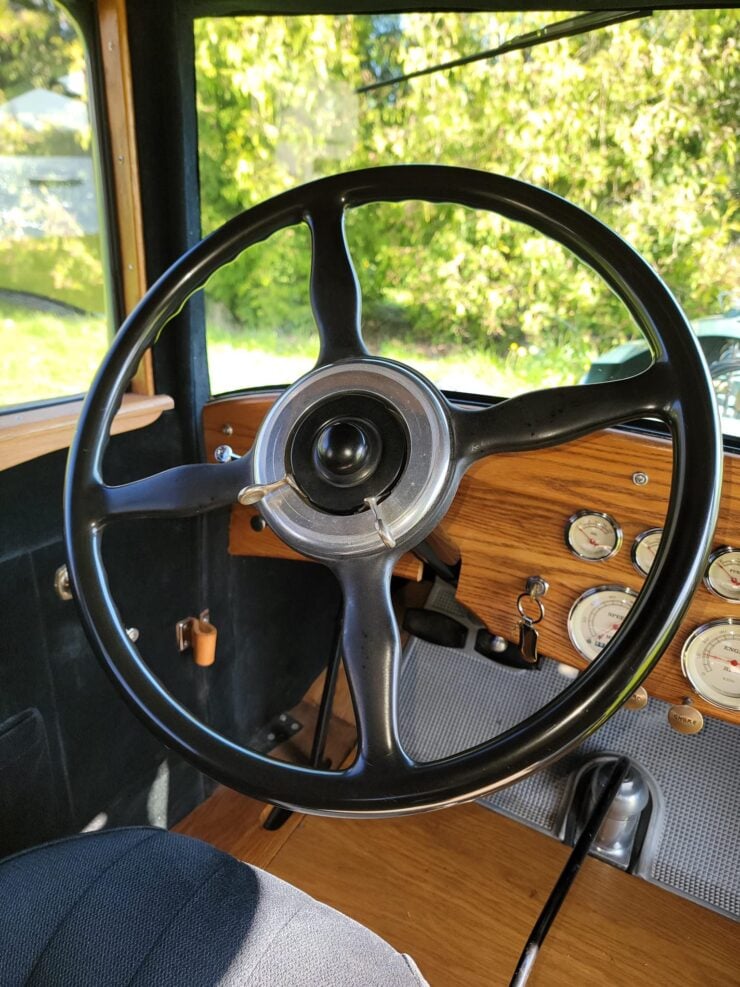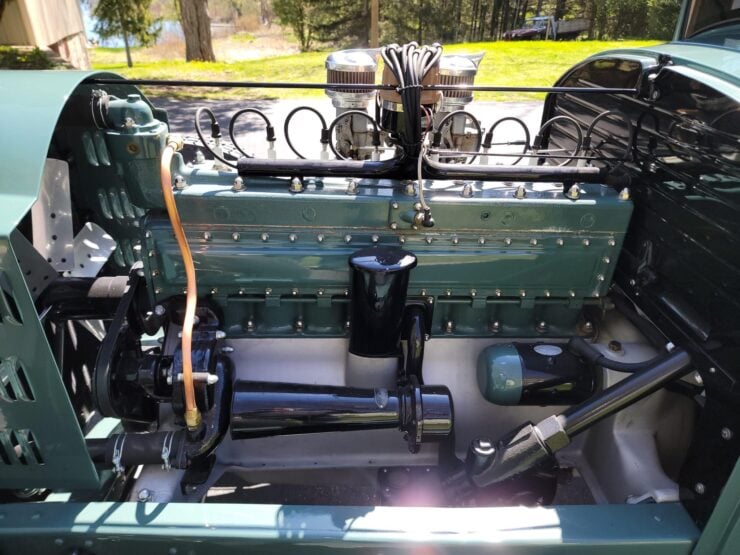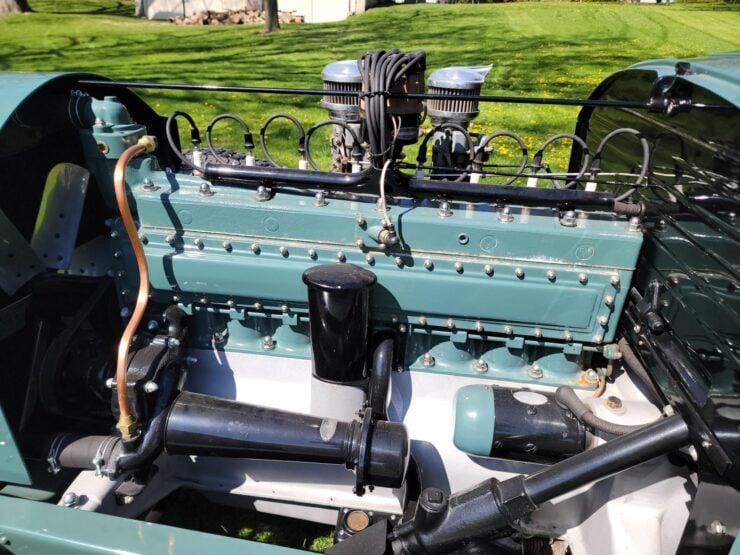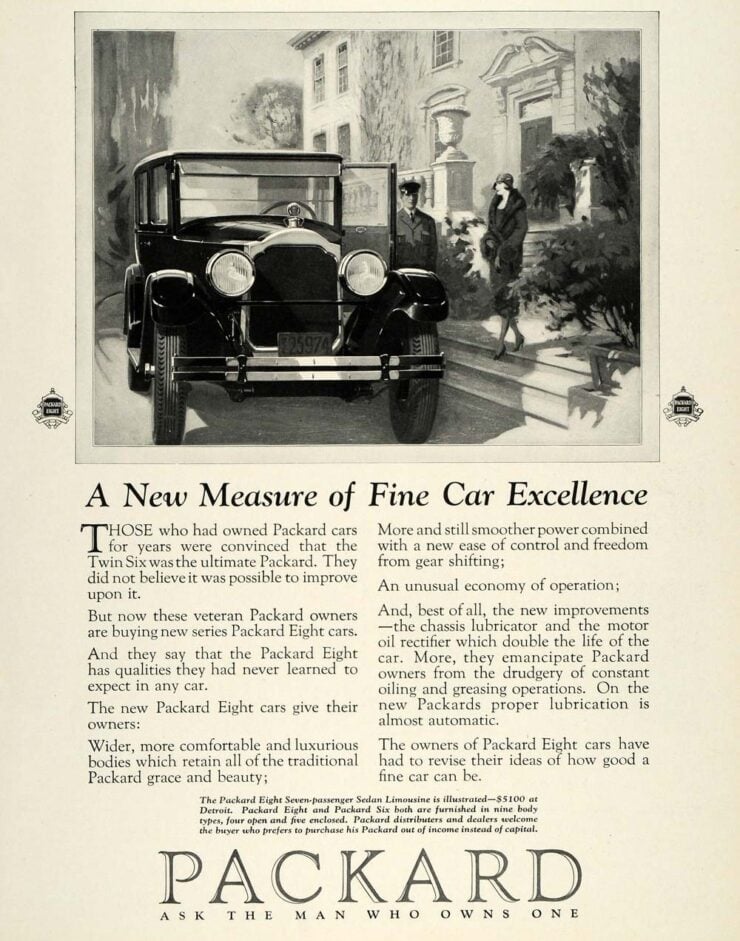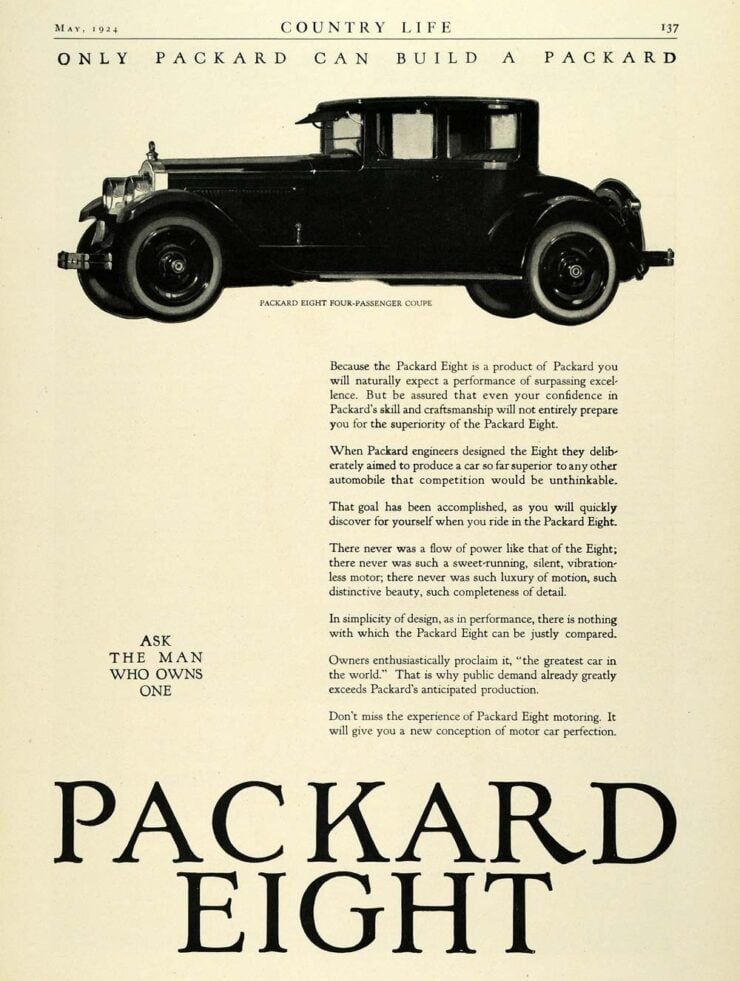This is a 1929 Packard Standard Eight 633 Coupe that spent 40+ years in storage before the current owner (now seller) acquired it and rebuilt it from the ground up into a straight-8 powered hot rod.
Power is provided by a Packard 319 cubic inch (5.2 liter) straight-8, an L-head engine that was capable of 90 bhp at 3,200 rpm and 210 lb ft of torque at 1,300 rpm – these were excellent figures for the 1920s. The top speed could reach as high as 80 mph, far faster than most humans had ever travelled in their life at the time.
Fast Facts: A Straight-8 Packard Hot Rod
- This 1929 Packard Standard Eight 633 Coupe was stored for over 40 years before being rebuilt into a custom straight-8 hot rod. The heart of the car is a rebuilt 319 cubic inch (5.2 liter) L-head straight-8 engine, upgraded with dual Holley 94 carburetors, a modern electronic ignition, and a series of other improvements.
- The Packard Eight, introduced in 1924, signaled Packard’s continued shift toward powerful, luxurious vehicles, appealing to more affluent American buyers. It quickly gained fame for its smooth straight-8 engine, advanced engineering, and its Art Deco elegance – becoming a favored automobile among America’s elite during the prosperous interwar period.
- Over the years, the Packard Eight engine evolved significantly, initially debuting with a 357.8 cubic inch L-head producing 85 bhp, eventually reaching 384.8 cubic inches with 109+ bhp by 1927. The later-introduced 319 cubic inch engine, despite smaller displacement, outperformed earlier engines thanks to improved engineering and design.
- The Packard Eight line persisted as a distinct model line until 1936 and remained integral to Packard’s identity into the 1940s, eventually replaced by more compact and powerful V8 engines post-WWII. The Packard hot rod shown here has a number of classic hot-rodding touches, like a channelled body for lower ride height and improved center of gravity.
History Speedrun: The Packard Eight
The Packard Eight was a critically important model for the Packard Motor Car Company – it was introduced in 1924 as a replacement for the company’s older “Twin Six” series of models.
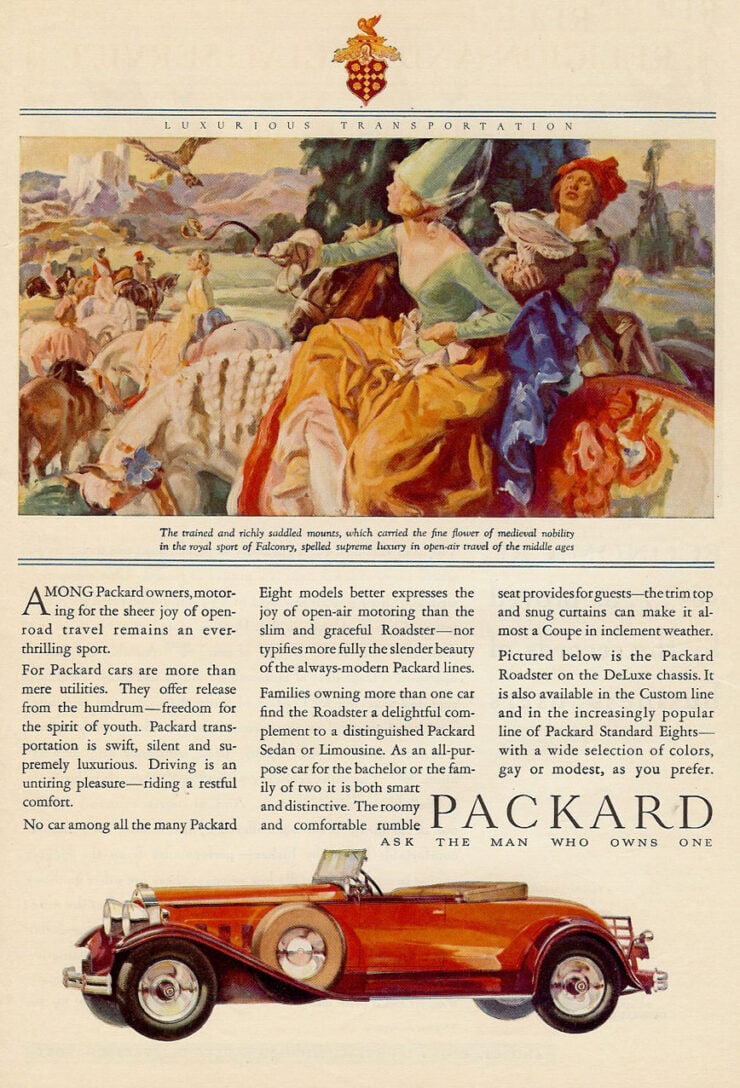

The Eight marked Packard’s continued move into the realm of more powerful and more refined automobiles during the boom time of the 1920s, this helped to establish the company as one of America’s key luxury car manufacturers during the tumultuous interwar period.
The car was directly aimed at affluent buyers and as a result it was available in a wide range of body styles, including sedans, coupes, convertibles, roadsters, and limousines. It quickly developed a reputation for its performance, as well as its advanced engineering and art deco elegance – this soon made it a favorite among America’s statesmen, industrialists, and the socially prominent.
The very core of the Packard Eight’s identity was its straight-8 engine. The initial version introduced in the first series featured a 357.8 cubic inch L-head inline-eight producing 85 bhp. This was a significant figure at a time when many luxury competitors still used less-powerful six-cylinder engines.
The use of a long inline configuration contributed to the Packard’s trademark smoothness, a quality the brand actively promoted in their advertising and brochures. Over years that followed, Packard steadily refined this engine, increasing both displacement and power output to remain competitive in the fast-paced world of luxury American automobiles in the late-1920s.
In 1927, the engine’s displacement was increased to 384.8 cubic inches, with power climbing to approximately 109 bhp.
This engine used a flathead (L-head) design, this was consistent with Packard’s conservative engineering approach, favoring proven reliability over experimental complexity with newfangled overhead valve or overhead cam designs.
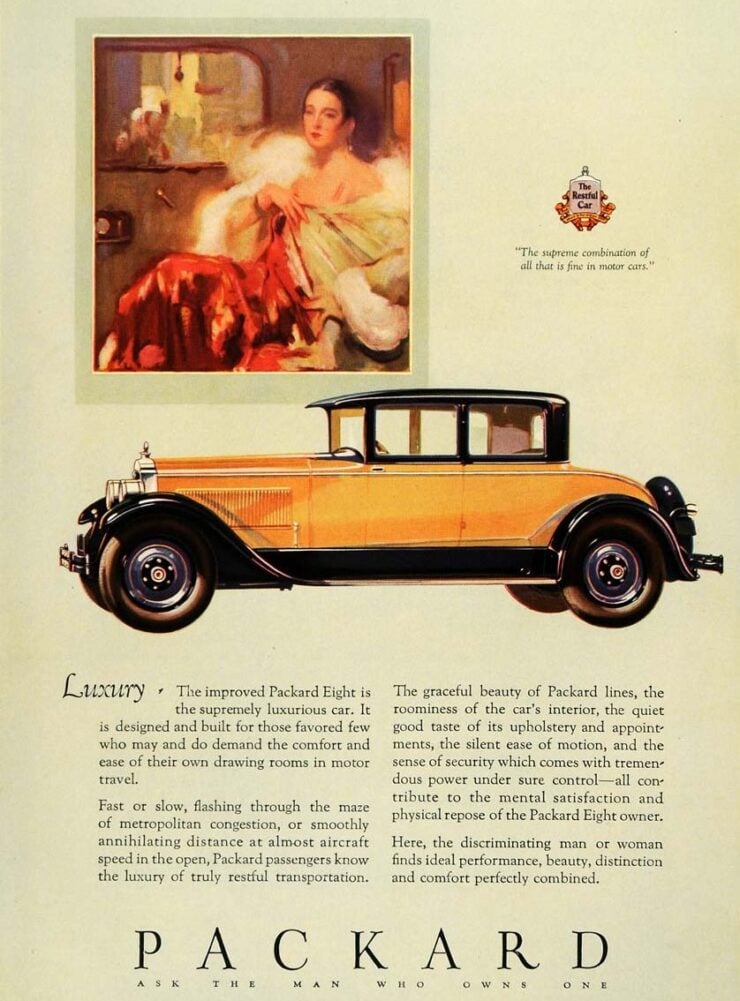


In 1929 the new 319.2 cubic inch straight-8 engine would debut in the Packard Standard Eight. This was the base model, but it’s worth noting that it still cost over five times as much as a comparable Ford at the time.
The 319 engine produced 90 bhp, more than the earlier (and larger) 357.8 cubic inch engine had offered. These straight-8 engines would continue to be refined into the 1930s, despite the Great Depression largely killing off luxury vehicle sales, with some later versions producing as much as 145 bhp.
Production of the Packard Eight continued until 1936 as its own distinct model line before it was absorbed into the broader Packard range, although the Eight name continued to be used on various models.
By 1940, Packard had introduced new lines like the 110, 120, and 160 – the straight-eight remained a core part of Packard’s identity until it was ultimately phased out after World War II in favor of more modern V8 engine designs which were more compact, lighter, and more powerful – they did lack the smooth refinement of the earlier inline-engines though.
The Straight-8 Packard Hot Rod Shown Here
The car you see here started life as a regular 1929 Packard Standard Eight 633 Coupe fitted with the 90 bhp 319.2 cubic inch straight-8 engine. Its early life seems to be largely lost to history, what we do know is that it was stored in a barn for 40 or so years where it survived a barn find before being rescued.
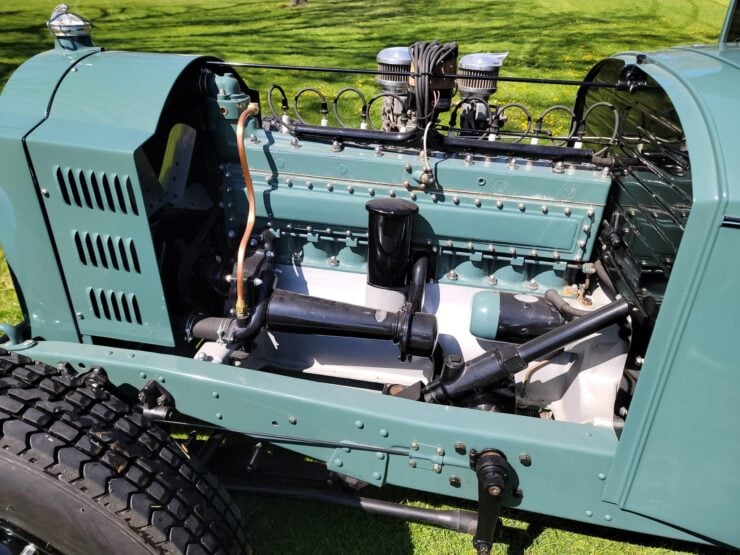


After it was recovered an ambitious rebuild began. The chassis and body were taken back to bare metal, the body was then channeled so it would sit lower on the chassis to reduce the center of gravity – an old hot rodder’s trick from the 1930s.
The 319.2 cubic inch straight-8 was rebuilt with poured babbitt bearings, new pistons and valves, lake-style headers, and a new intake manifold. It was fitted with dual Holley 94 carburetors, a 1955 Chevrolet distributor with a PerTronix electronic ignition conversion kit, and a Delco alternator for a modern 12 volt electrical system.
Power is sent to the rear wheels via a rebuilt 3-speed manual gearbox with a US Gear dual-range auxiliary transmission, and a 4.69:1 final drive ratio.
Inside the vehicle, you’ll find individual front seats and a rear bench trimmed in black cloth, with matching cloth used on the headliner and door panels. It has a wooden dashboard and floors, a textured metal firewall, and a four-spoke steering wheel.
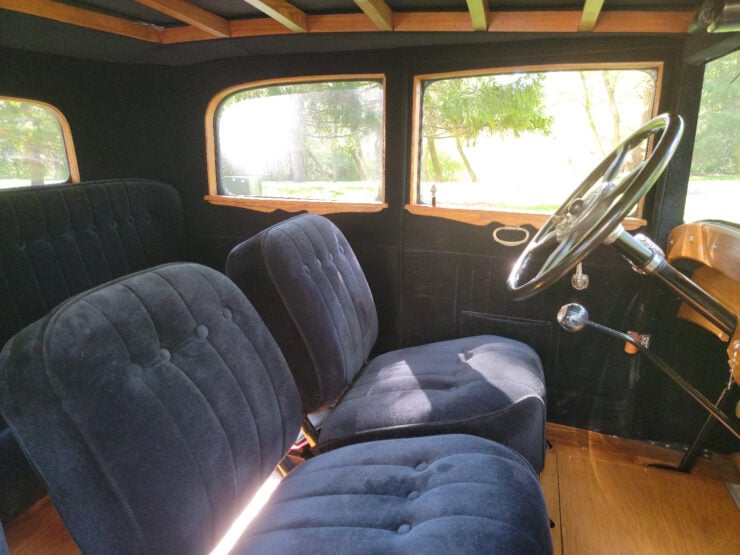


The car is now being offered for sale out of Jackson, Wisconsin by the builder. It has covered a reported 3,300 miles since the rebuild, it’s been featured in My Classic Car and in Ol’ Skool Rods, and it comes with memorabilia and a Wisconsin title in the seller’s name.
If you’d like to read more about it or place a bid you can visit the listing here.
Images provided by Bring a Trailer and the Packard Motor Car Company


